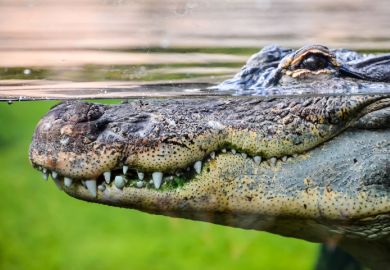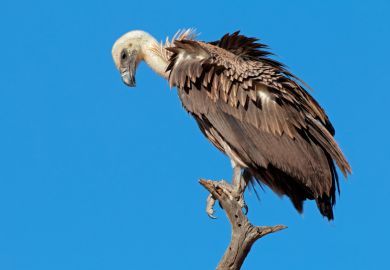Scientists will often muse about what are the greatest research papers of all time, but few will ever turn their minds to the very worst.
That, however, has now changed after a Canadian biologist curated a collection of what might be considered the most terrible research papers ever to make it into a periodical.
Despite their obvious awfulness, the papers brought together by neurobiologist Zen Faulkes, from the University of Texas Rio Grande Valley, make a valuable contribution to academia because they are deliberately bad.
In Stinging the Predators: a collection of papers that should never have been published, Professor Faulkes picks his favourite hoaxes on the so-called “bogus journals”, which are happy to publish junk science in exchange for a fee.
Its publication includes the most recent entry in the pantheon of classic stings – a Star Wars-inspired paper on the science behind Jedi mind control, which was written by the anonymous blogger Neuroskeptic and was accepted for publication by four academic journals last month.
Other stings that make the biologist’s canon include a surrealist psychiatry paper on “breaking the ice with buxom grapefruits”, which was recently accepted for publication by four journals.
That paper, which claimed that it was supported by the “Flattened Hedgehog Foundation”, concludes with the powerful message that researchers “don’t spit coffee at carpeted trumpets – titter at broken gorillas”, adding that the “lithium flying saucer probably isn’t Scottish”.
Classics in the nonsense genre also feature, including the famous 2014 paper by two US researchers that consisted solely of the words “Get me off your fucking mailing list”, repeated hundreds of times over 10 pages, and the original spoof paper, a nonsensical work by US physicist Alan Sokal from 1996 that lampooned the post-modernism in fashion in the humanities at the time.
Others mentioned by Professor Faulkes include an investigation into whether cocoa is an ingredient of Coco Pops, a study into whether eating large amounts of chocolate helps you to lose weight and a paper on nuclear physics written entirely by a version of Siri, the iPhone’s advice function.
Nine of the 17 sting papers in the collection were written in the past 12 months, leading Professor Faulkes to debate whether science had reached its “peak sting” moment, with scholars now tiring of the elaborate hoaxes, however amusing they are.
“For active researchers, the point about predatory journals has been made so often that it's boring now,” said Professor Faulkes, who dubbed it “YASP syndrome (Yet Another Sting Paper)”.
However, until the problem of predatory publishing was fixed, there will always be a place for prank papers, he said.
“I would just like to see more ‘sting’ papers that were funny to the rest of us,” he said.
Register to continue
Why register?
- Registration is free and only takes a moment
- Once registered, you can read 3 articles a month
- Sign up for our newsletter
Subscribe
Or subscribe for unlimited access to:
- Unlimited access to news, views, insights & reviews
- Digital editions
- Digital access to THE’s university and college rankings analysis
Already registered or a current subscriber?







